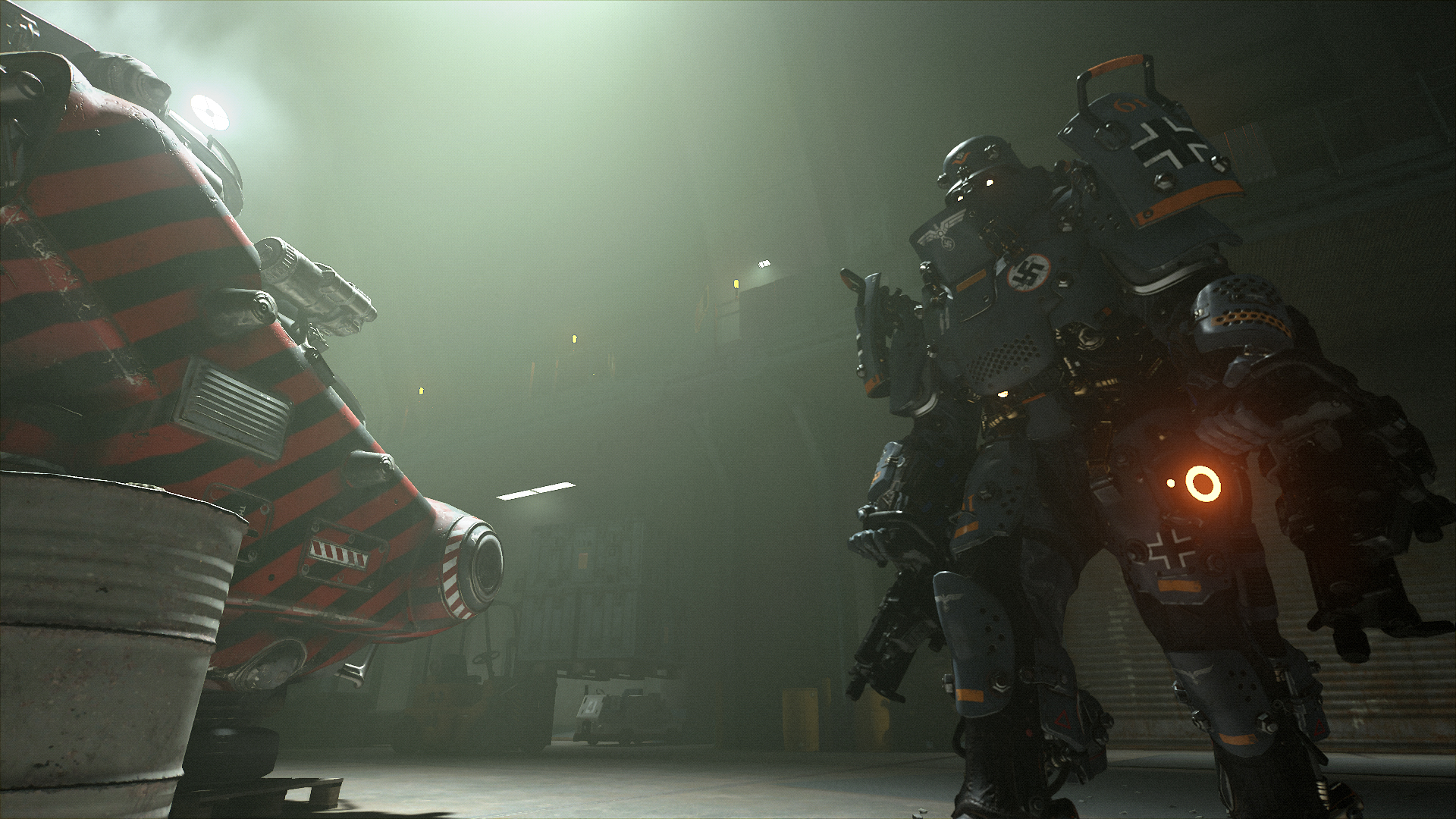Nathan Wertz is the editor of ThisAndThatTech.com.
Swedish military veteran, Daniel Eriksson, is the Lead Gameplay Animator for MachineGames, which recently released "Wolfenstein II: The New Colossus" in 2017. The Wolfenstein story is set in an alternative history where the Axis powers won World War II. Daniel shares his military transition story with us, along with the various aspects of a career in the video game industry as an animator.
Can you give us a bit of background on where you grew up?
I grew up in a pretty normal middle-class environment in a suburb to Stockholm called Haninge. It has a lot of nice old forests and an archipelago where I spent a lot of time with my family.
I went to a standard school where we had a special art course that allowed us to try clay animation. I later studied photography and wanted to be a photographer until I tried Photoshop back in '96 – I realized that the digital world was more fun than the analog. And then a year after that I started doing 3D graphics in a program called 3D studio MAX and got completely hooked.
Did you serve in the military? Where did you serve?
Yes, I did a year up north in a place called Boden, where I was a gunner in the Swedish tank, Stridsvagn 122 (armoured fighting vehicle that is the Swedish version of the German Leopard 2 tank).
At that time it was called MekB 19, which stands for Mechanized Brigade, and I was a part of the "Stridsvagns Battalion." It was also a lot more winter training up there than being down south.
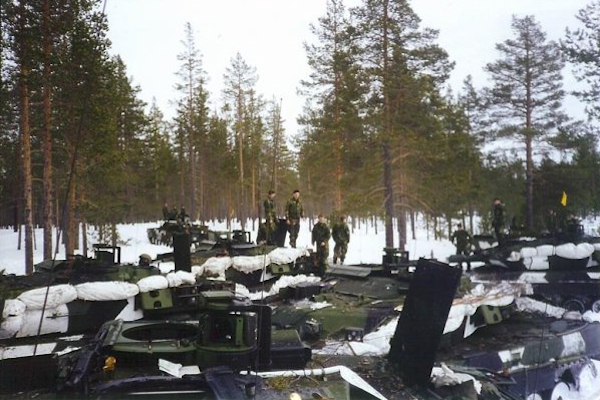
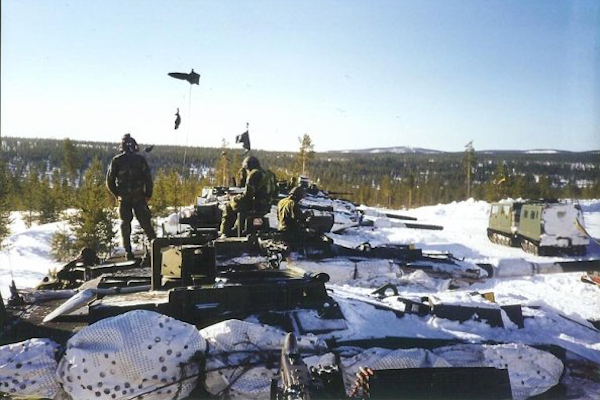
(Test/Shooting Range outside of Boden)
Why did you decide to join the military?
I was around 18 at the time and felt I needed to get away for a year to decide what I wanted to do. I wanted to be placed up north because I thought I could go snowboarding on the weekends, but there never was any free time at all. And just by pure luck, they thought I would fit well as a gunner in a tank and I agreed.
Any memorable experiences in service that stand out?
Getting the Strv 122 (AFV 122) to jump and being in freefall inside a stabilized turret was a really cool feeling.
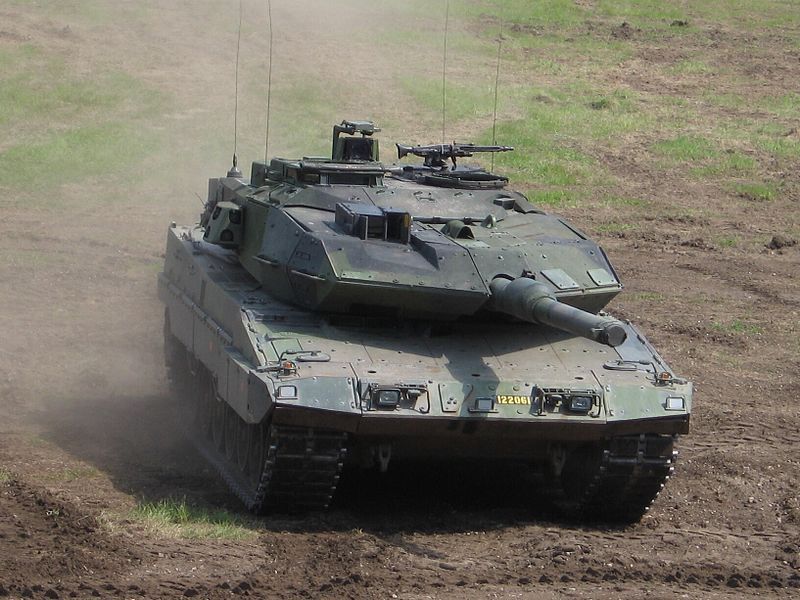
(A Strv 122 Tank. Photo credit to Anders Lagerås).
What are your thoughts about serving now?
I'm glad I served. I learned a lot and gained experiences that otherwise wouldn't have been possible in civilian life, at least not at that early age. And you remember the fun stuff more than the boring stuff. I do think it is good to have a short serving time for the people who are interested in serving.
What was your path after exiting military service to your current position at MachineGames?
I got a job in a plastic factory so I could buy a new computer. The new hardware allowed me to do bigger and better 3D graphics, which I then rendered out on CDs and distributed to places I wanted to work or have an internship at. I received an internship at the second place I applied to and was later hired full-time.
A few years later that company collaborated with a game studio called Starbreeze. When my current studio went bankrupt, me and some other colleagues joined Starbreeze. They had just finished a game called "Enclave" and had now started working on "Knights of the Temple" and "Riddick." Starbreeze was started by the same people who around 10 years later founded MachineGames. When the new studio was up and running, it was a no-brainer to join them again, this time to work on "Wolfenstein: The New Order."
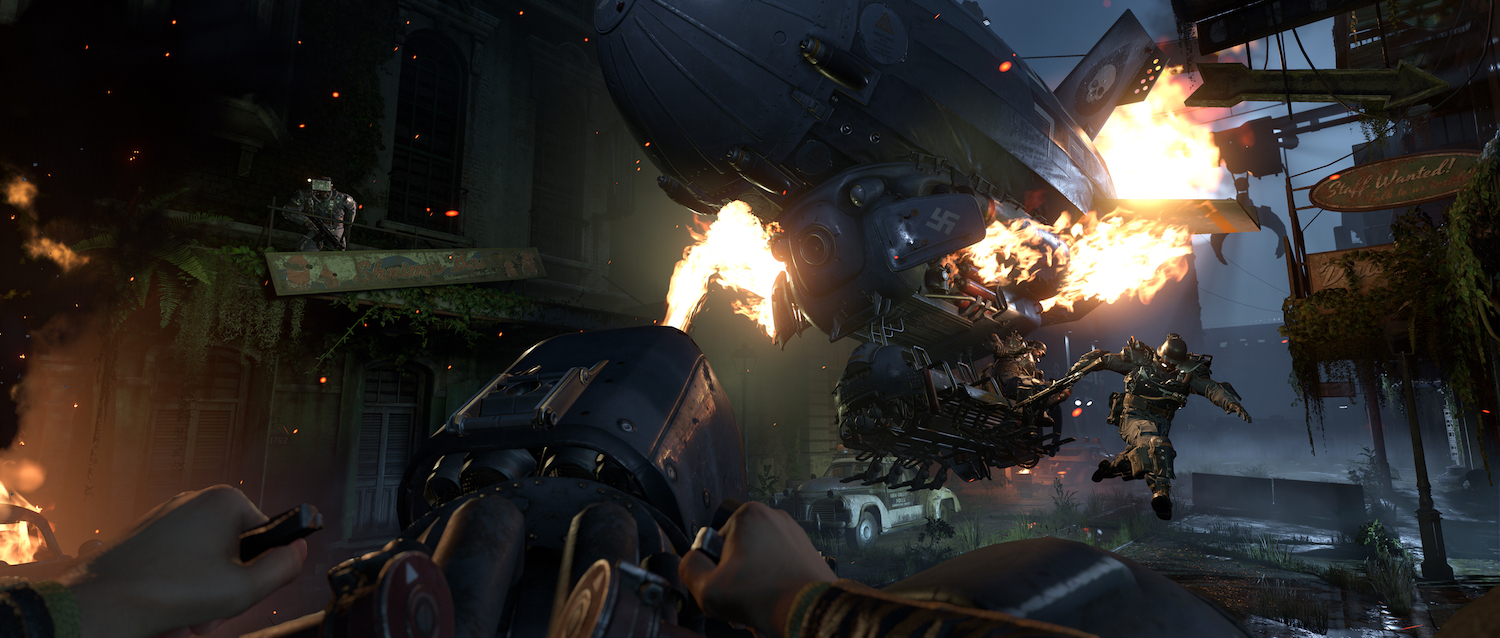
What is your current position at MachineGames and how do you describe your job to a layman?
My current position is Lead Gameplay Animator. I mostly work on animations for the player and the AI. For example, if the player is reloading his gun, it's my job to move around his arms, fingers, camera, and gun parts in a way that fits to that gun's feeling and mechanics. This is done by re-posing (in this case) the human character's arms. You create a keyframe of that pose and then move a time slider a few frames and make another pose. This process is repeated until you have an animation that matches up with the desired result. From there, it's about iterating and adding details. Finally, you need to test it by playing the game, shooting, running, reloading, et cetera, and tweak it until it feels really good and matches whatever that gun feeling is.
Wolfenstein II
(Wolfenstein II Animation Example. Photo [gif] credit to EvilMadMonk).
Wolfenstein II has quite the memorable opening, to put it mildly. Can you walk us through what it's like animating for something like that? Any other animating moments in your career that stand out?
It's very hard and takes a long time with a lot of people from different departments. For the story segments, we use a lot of performance capture to record the animation or motion, dialogue, and facial expressions. This process is performed by fantastic actors like Brian Bloom, who plays BJ. After a tremendous amount of work to get the motion capture looking good, the director decides what footage to use.
Once we are happy with that we start to animate on top of the motion capture to make it look as good as possible and maybe fill in some holes that are missing. For example, we might need to animate details that we couldn't capture like an arm being chopped off or some interaction with a dog or a robot or whatever is needed for a particular scene.
It's hard work but very rewarding in the end, particularly when you hear or even see peoples' reaction to it. For me, it´s partly why I wanted to get here in the first place and why I'm still here, to be a part of those memorable moments. It's been great to work on so many memorable characters and moments over the years, like the Panzerhund riding in "Wolfenstein II: The New Colossus," "The Darkness" daemons, and playing guitar with "J" in "Wolfenstein: The New Order" are all very special to me.
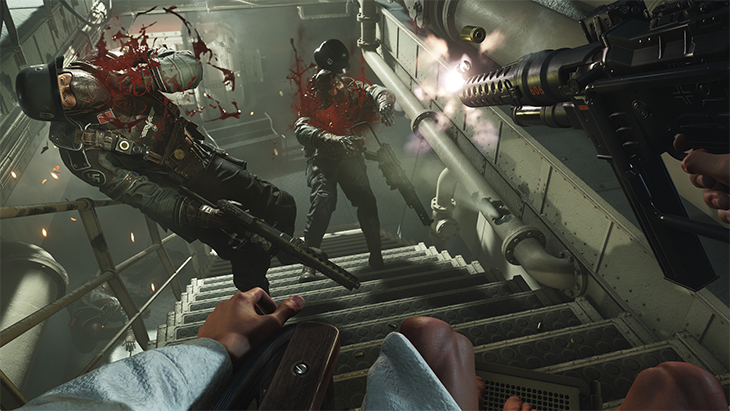
(Wheelchair combat in Wolfenstein II: The New Colossus. Yes, you read that correctly...)
In the US we saw some controversy with the "Make America Nazi-Free Again" marketing campaign slogan for Wolfenstein II. I've read of countries like Germany who don't allow and/or condone Nazi symbolism in any form. Do you see similar controversies over in Europe due to the game's subject matter? What is that conversation like internally regarding the handling of content that could be divisive to some?
I personally don't think about that too much. In my world Nazis have always been the bad guys and they're easy enemies to include in a video game. Swastikas and similar symbols are banned in Germany, so we have to make another version for them, which is some extra work, but if you know that from the beginning you can be smart about it and separate the swastikas early on to swap them out. There will always be people who don't like what you are doing regardless of the content. It's important to not let that distract or dictate what you are doing.
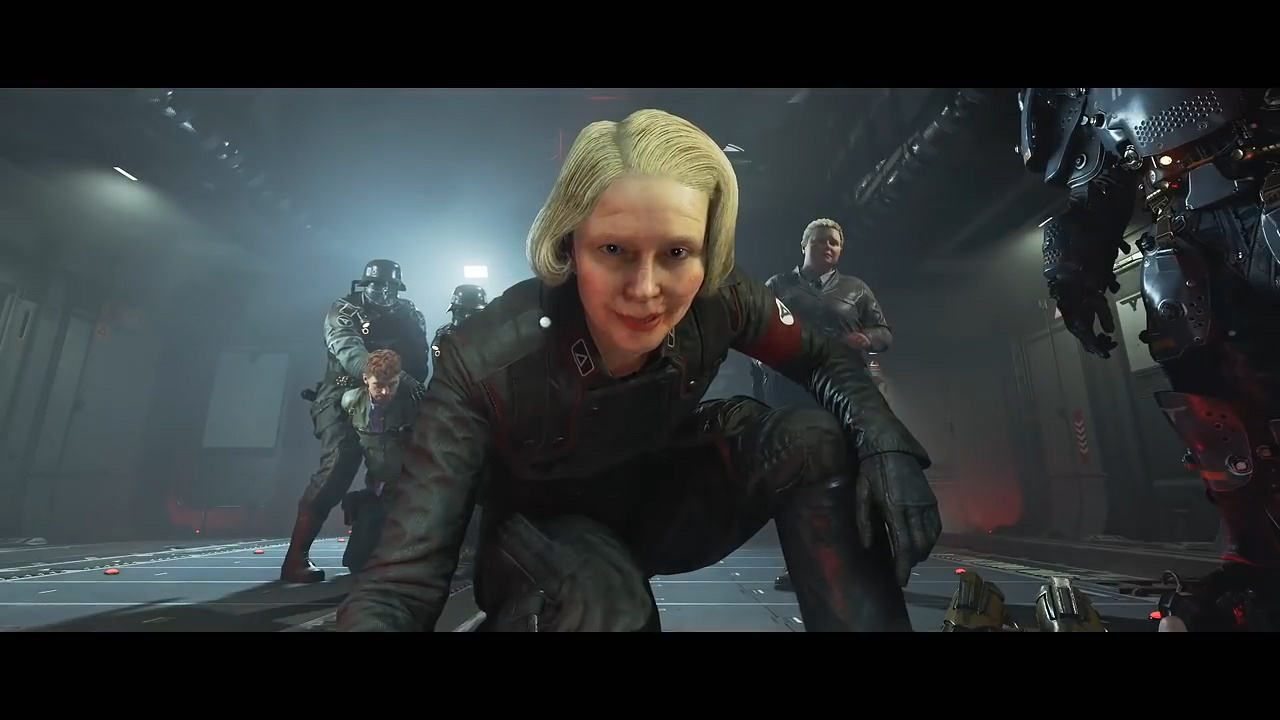
(This is a screenshot from the German version of Wolfenstein II: The New Colossus. On the left-hand side you'll notice a blank, white canvas in the background. Uncensored versions, including the US version, contains an image of a swastika at that location).
Sigrun Engel's movement and mannerisms [right-hand side of image above] specifically stood out to me, which made her come alive as a character. Did you have any hand in that?
I wish I did, she´s definitely one of my favorites! All the credit goes to actress Alyssa Preston, the people who chose her to play Sigrun, and our creative directors who come up with awesome characters like her. When dealing with motion capture you need to "over act" a bit and she did it perfectly.
I hear people complain about "uncanny valley" in CGI all the time. In your opinion, what's the next technological hurdle that needs to be overcome in animation?
To me the uncanny valley is very much tied to animation today, especially if you're going for realism. Let's say that you have a perfectly 3D-modeled face or even a face scan with photo textures and renders that look completely real on a still image: people will accept it as a real face. But as soon as you start to move that head around, things start to look a bit off and the expression is kind of dead, so you need to add animation to it. There are a lot of muscles in the face to allow for all the expressions and we need to animate it realistically.
And even with performance capture (motion captured face) there is a lot of work to remove the uncanny valley. And on top of that, we want to differentiate the look of BJ Blazkowicz from Brian Bloom, so you need to tweak and offset some parts, which means you will get further from reality with the stuff that you captured and scanned.
In terms of the next big technological hurdle, I would say it's iterating on the face rig the actors have to wear – specifically the design and what it's allowed to do (the muscle movement under the skin and how the skin itself folds and stretches to the expressions). But it is so tied in to all the other components with rendering, texture and shaders, hair, and cloth. Movies/cut scenes are closer to nailing this thanks to a fixed camera angle and fewer lines. That gives the animator more time to work on just that one angle.
So it's more of a quality thing, whereas in games it's more quantity and you don't have the time to work as much on it. In games you also have a camera moving around a head attached to an AI entity that sometimes does stuff it wasn't intended for, or even automated systems that make them talk after an audio file with preset facial poses. We are working on some of the issues in-game at the moment, but it will take a lot of time to nail it, if we ever do.
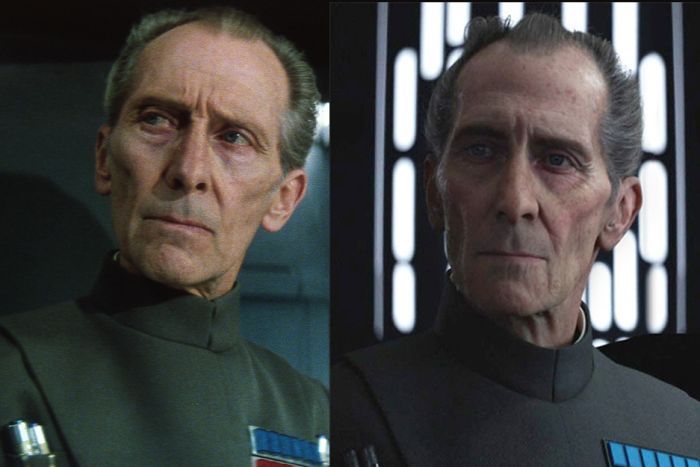
(An example of "uncanny valley" from Star Wars: Rogue One [2016]. Peter Cushing originally played Grand Moff Tarkin [on the left] in the original Star Wars: A New Hope [1977]. He has been subsequently animated for other films in the series. Image: Lucasfilm).
Has the military helped or hindered you in the job market?
I don't think it has hindered me at all. It might have helped me to figure out what I wanted to do when my service was over and to really go for it.
We always hear about burnout in the video game industry. Is it plausible to have work/life balance in your field? How do you manage it?
It is easy to get burned out. The job can involve sitting in front of a computer all day long, some days 12 hours, and having tight deadlines that you need to deliver. I force myself to exercise 2-4 times a week and don't sit in front of a computer when I'm at home. Just finding a balance of work and what I like to do in my spare time is really important.
Has your job ever required the assistance of military experts?
We have a few gun nuts at work. One of them is very tied in to the guns in our games. We sometimes shoot guns together and they always give me valuable insight into gun handling and the do's and don'ts. We also motion captured a soldier once to record walk cycles for animation.
Any books, podcasts, mentors, et cetera, that helped you along the way and that you would like to recommend?
A good book on animation is one from Richard Williams, titled The Animator's Survival Kit.
Military.com has a lot of active duty and veteran readers that may want to someday work in your field. To get to where you are at today, what do you feel is the optimum path to travel? Any other advice for people just starting out?
Find out what you think is fun, that will give you a challenge and a satisfaction and go for that. I also think that you shouldn't be afraid to start from the floor, like an internship.
